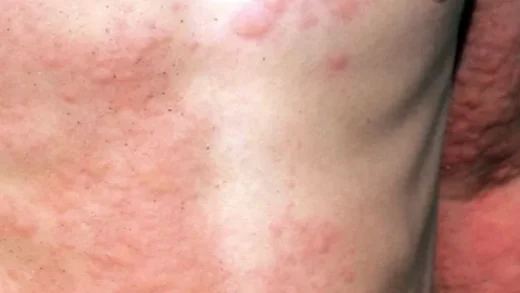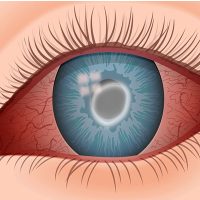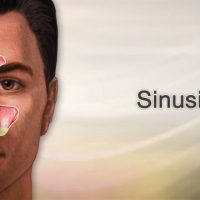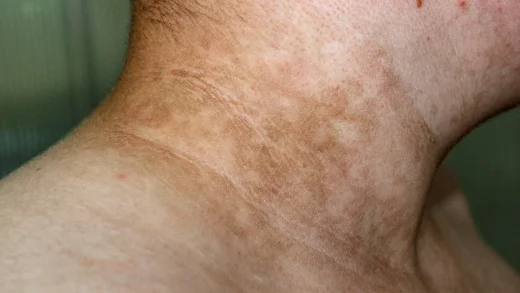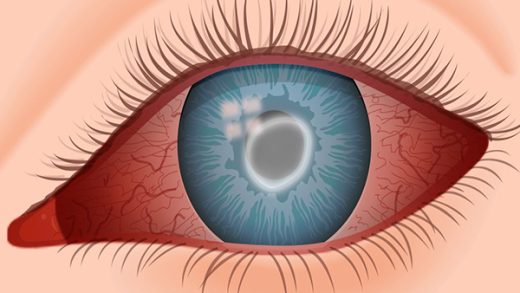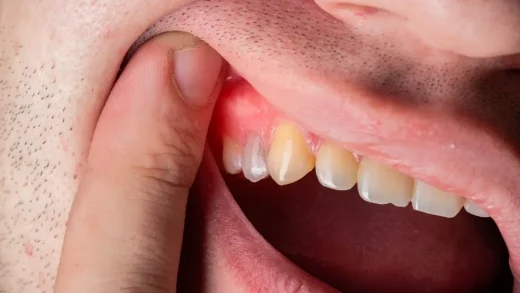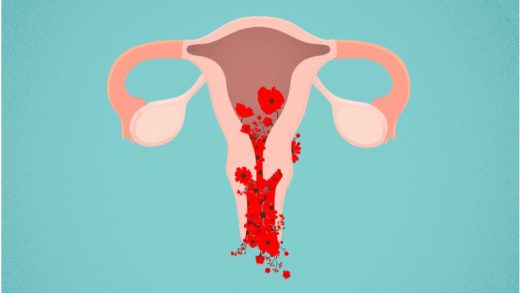What is a tooth abscess?
A pocket of pus resulting from a bacterial infection in your gums is called a tooth abscess. Typically, an abscess appears as a red, swollen pimple, boil, or bump. In addition to affecting the affected tooth, the infection may also spread to nearby teeth and bone. Abscesses around teeth can develop for a variety of reasons in various locations.
Three types of tooth infections can cause abscesses:
- Gingival: This infection develops in your gums. It doesn’t usually affect your tooth or supporting structures.
- Periapical: A periapical abscess is an infection that forms at the tip of your tooth root. If you have a tooth that’s decayed or fractured, bacteria can enter your tooth and spread to the pulp. (The pulp is the innermost part of the tooth that contains nerves and blood vessels.) When bacteria invade the pulp, infection can spread to the tip of your tooth’s root, then, eventually to the surrounding bone, causing an abscess to form.
- Periodontal: This infection starts in the bone and tissues that support your teeth. A periodontal abscess usually results from gum disease and is more common among adults.
How does a tooth abscess affect my oral and overall health?
A tooth abscess can extend to your jawbone, soft tissues in your face and neck, and other areas if left untreated. Rarely, the infection may spread to your brain (bacterial meningitis) and heart (endocarditis).
Who gets abscessed teeth?
You’re more likely to develop an abscessed tooth if you:
- Smoke: People who smoke are about twice as likely to get tooth abscesses as people who don’t.
- Have dry mouth (xerostomia): Bacteria thrive in a mouth with a low amount of saliva.
- Have poor oral hygiene: Regularly brushing, flossing and getting dental cleanings reduces bacteria.
- Have a weakened immune system: Diseases or medications can lower your immune response, making it harder to fight off germs.
Symptoms and Causes
What are the symptoms of an abscessed tooth?
If you have a tooth abscess, you might describe your pain as:
- Gnawing or throbbing.
- Sharp or shooting.
- Continuous or only when chewing.
- Radiating to your jawbone, neck or ear.
Other tooth abscess symptoms may include:
- Tooth sensitivity to hot or cold temperatures.
- Bitter taste in your mouth.
- Bad breath (halitosis).
- Gum redness and swelling.
- Loosening of the affected tooth.
- Swollen area in your upper or lower jaw.
- Open, draining sore on the side of your gums.
In addition, you may experience more generalized symptoms like:
- Fever.
- Swollen lymph nodes.
- General discomfort, uneasiness or ill feeling.
What causes a tooth abscess?
Anything that creates an opening for bacteria to get into your tooth or surrounding tissues can lead to a tooth abscess. Causes include:
- Severe cavities: A cavity (tooth decay) is the destruction of your tooth’s hard surface. This occurs when bacteria break down sugars in food and drink, creating acid that attacks enamel.
- Broken, chipped or cracked teeth: Bacteria can seep into any opening in a tooth and spread to the pulp.
- Gum (periodontal) disease: Gum disease is an infection and inflammation of the tissues around the teeth. As gum disease progresses, the bacteria gain access to deeper tissues.
- Injury to the tooth: Trauma to a tooth can injure the inner pulp even if there’s no visible crack. The injury makes it susceptible to infection.
Diagnosis and Tests
How is an abscessed tooth diagnosed?
In addition to examining the tooth and surrounding tissue for signs of infection, your dentist may:
- Recommend a dental X-ray: This can help identify sources of dental disease that may have led to the abscessed tooth. Your dentist can also use X-rays to determine if the infection has spread and may be affecting other areas.
- Recommend a CT scan: If the infection has spread to other areas within your neck, this will help to identify the extent of the infection.
- Tap and press on your teeth: A tooth with an abscess is often sensitive to touch or pressure.
- Do thermal tests: These tests will help your dentist determine the health of your tooth pulp.
Management and Treatment
How do you treat a tooth abscess?
Goals of treatment are to eliminate the infection and prevent complications. Tooth abscess treatment options include:
- Incision and drainage: Your dentist makes a small incision (cut) in the abscess to drain the pus. They may also place a small rubber drain. This helps keep the area open so the rest of the infection can drain out.
- Root canal: This option helps eliminate the infection and save your tooth. This common procedure removes your tooth’s infected pulp, and fills the space with material to prevent another infection. The pulp is important when the tooth is growing, but once it’s mature, the tooth can survive without the pulp. After the procedure, your tooth should be back to normal, though you may need a dental crown to protect the root canal. If you care for the restored tooth properly, it can last a lifetime.
- Tooth extraction: Sometimes, an abscessed tooth becomes damaged beyond repair. In these cases, your dentist may need to extract (pull) your tooth.
- Antibiotics: Your dentist may recommend antibiotics to help with your treatment. It’s important to know that while this medication may help fight off remaining bacteria, it won’t get rid of the cause of the infection, which is the affected tooth.
How soon after tooth abscess treatment will I feel better?
A tooth abscess should clear up after treatment. Temporary sensitivity is common, and it may take a few days to feel completely back to normal.
As every case is unique, healing times can vary. Ask your dentist what to expect after your tooth abscess treatment.
Can a tooth abscess go away by itself?
An abscess in the tooth will not go away by itself. Pain may stop if an infection causes the pulp inside your tooth to die. The pain stops because the nerve isn’t functioning anymore, so you may not be able to feel it. The bacteria will still spread and obliterate the surrounding tissue, though. Even if you are not experiencing any pain, visit your dentist if you have any signs of a tooth abscess.
How long can a dental abscess go untreated?
Your oral and general health will suffer greatly if a tooth abscess is left untreated, as it will eventually spread to the surrounding tissues and beyond. The infection may take weeks or months to spread, and it is impossible to predict when it will do so. You must see a dentist as soon as possible because tooth abscesses do not heal on their own.
Prevention
How can I reduce my risk for tooth abscesses?
By visiting your dentist on a regular basis and receiving cleanings and checkups, you can lower your chance of getting a tooth abscess. Seeing your dentist is also necessary if a tooth chips or becomes loose. Dental health depends on practicing good oral hygiene. Brush and floss your teeth twice a day when you are at home.
How can I relieve the pain of a tooth abscess?
A toothache is an indication that you need to visit the dentist. Warm saltwater rinses and over-the-counter painkillers (like acetaminophen, naproxen, or ibuprofen) can help reduce discomfort while you wait for your appointment. It is crucial to understand that there is not a tooth abscess home remedy that can address the problem forever.
Outlook / Prognosis
When should I see a dentist?
Make an appointment with a dentist as soon as possible if you experience tooth pain, gum swelling, or mouth pain. The likelihood that the infection will spread outside of your tooth decreases with the timing of your treatment.
When should I go to the ER?
You should head to your nearest emergency room if you have a tooth abscess accompanied by:
- A fever of 100.4 degrees Fahrenheit (38 degrees Celsius) or higher.
- Difficulty swallowing.
- Facial swelling.
- Confusion.
- Elevated heart rate.
What questions should I ask my dentist?
- Did an abscessed tooth cause my symptoms?
- What tests will you need to run?
- What’s the best course of action?
- Are there alternative treatment plans?
A note from DocAdvice
A pocket of bacterial infection in your teeth that can harm your oral tissues and spread to other parts of your body is called an abscess. Since prevention is key, make sure to see your dentist on a regular basis and do not put off checkups. During these appointments, your dentist can identify issues early on, when they might be simpler to fix. It is critical to see your dentist if you are in pain so you can receive the care you require.

